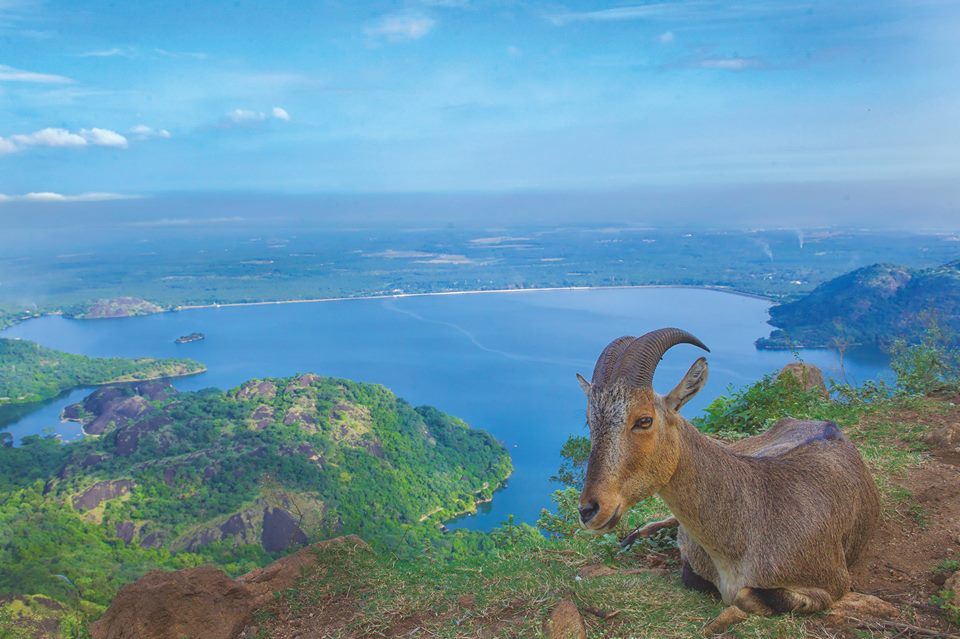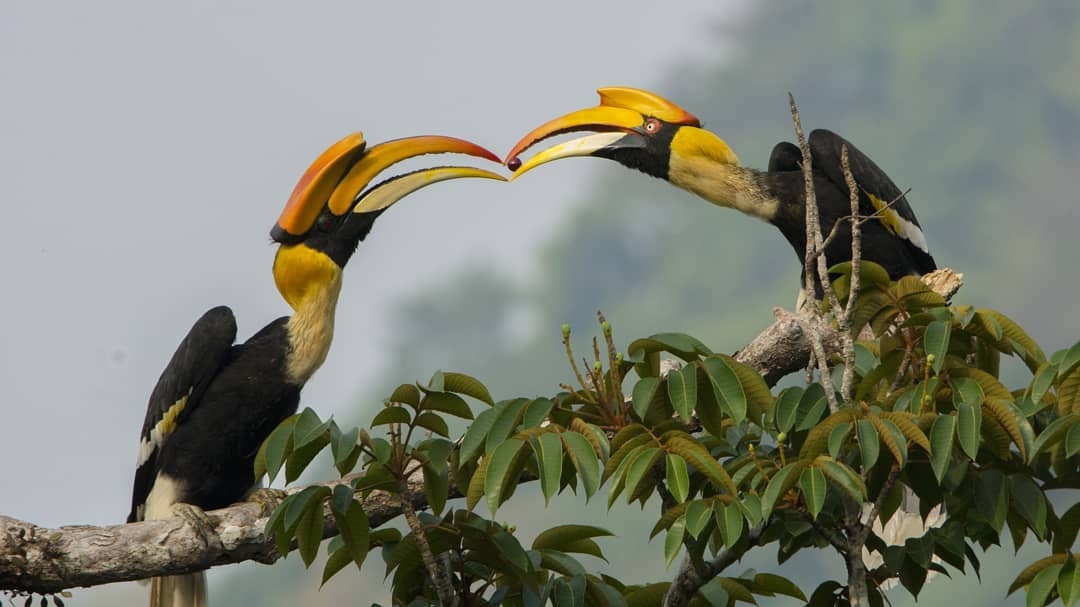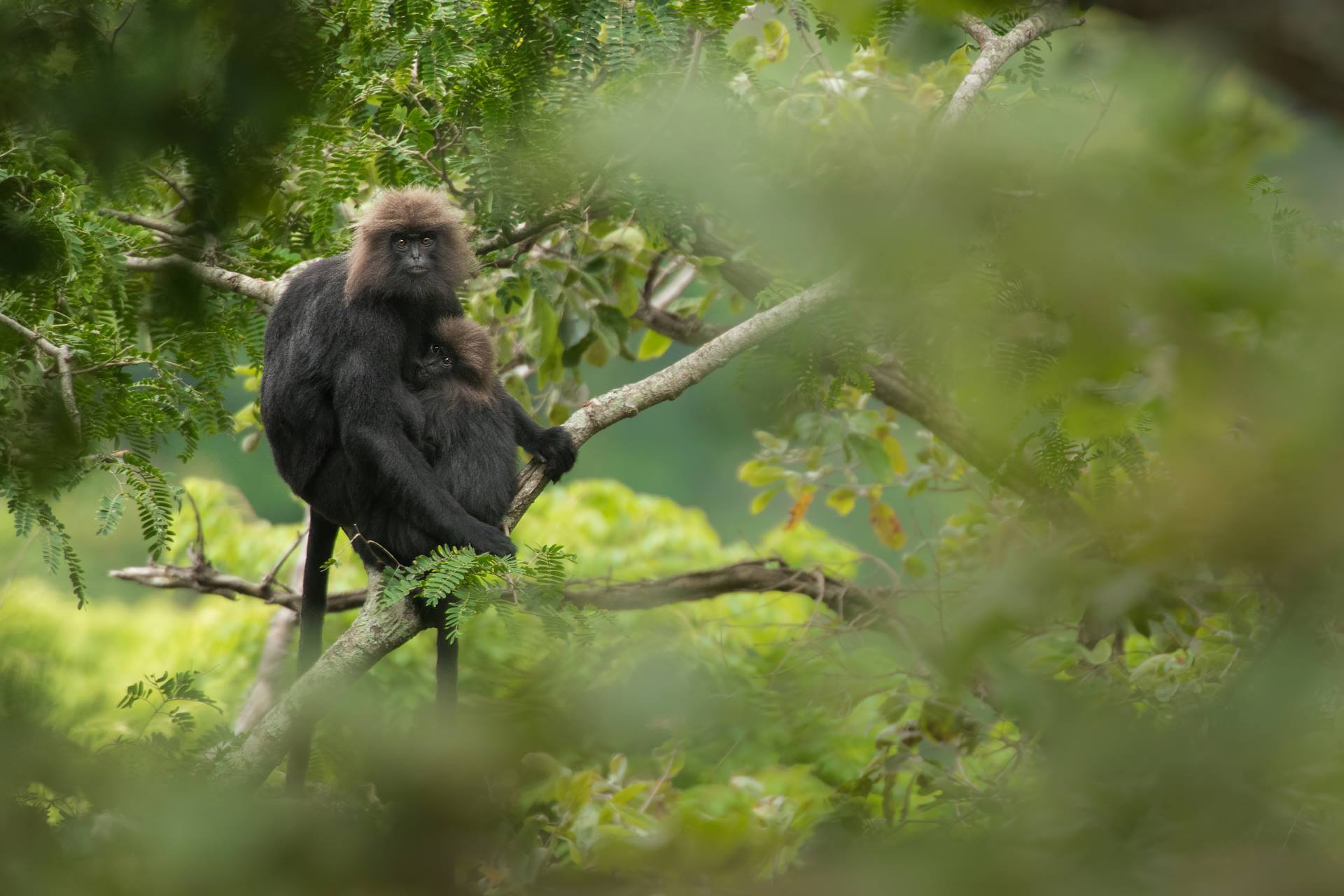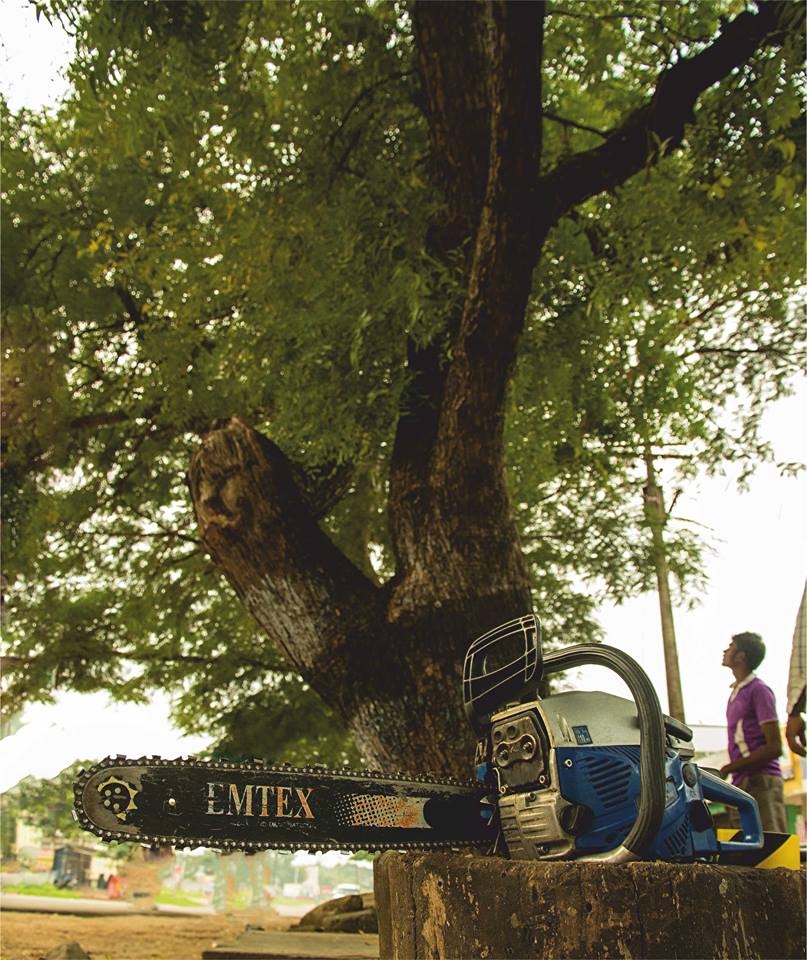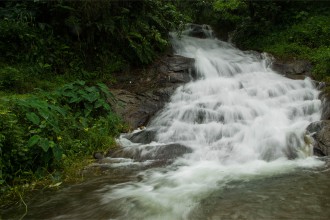Skillful cliff climbers. Fearless stunt masters. Extreme adrenaline junkies – if Nilgiri tahrs were human, these would be the adjectives one would use to describe them. At plain sight, they might appear to be a drab version of our domestic goats, but these iconic creatures are Tamil Nadu’s state animal that live in the mountainous terrain of the Anamalai Hills spread across the Anamalai Tiger Reserve, Parambikulam Wildlife Sanctuary and Eravikulam National Park of the mighty Western Ghats.
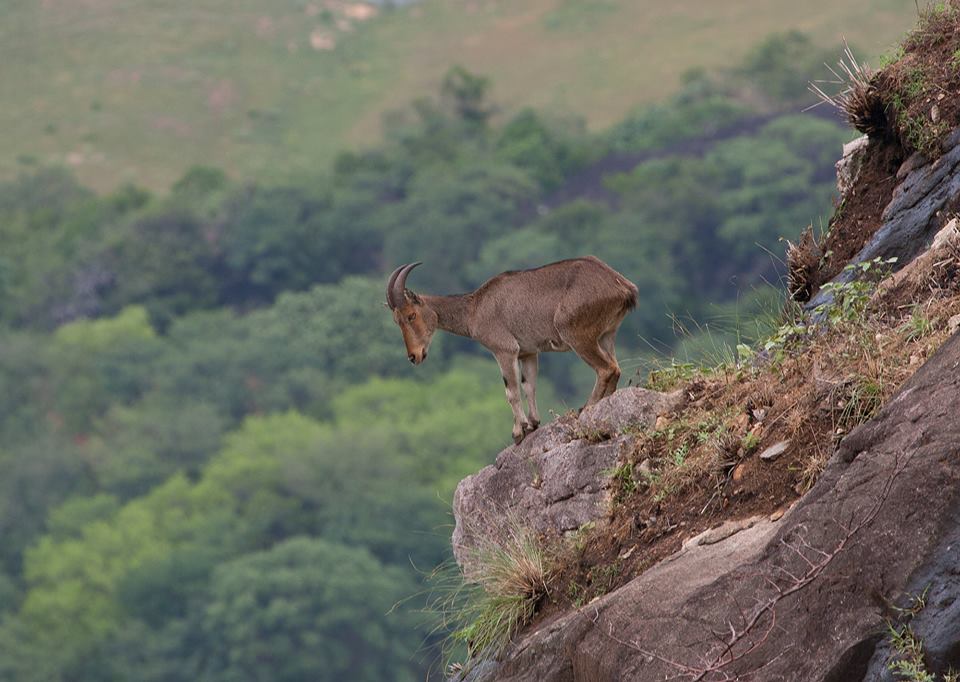
Known as Varai Aadu in Tamil (varai – cliff, aadu – goat), these gravity-defying goats are capable of scaling sheer cliffs and skillfully tread along the steep and rocky terrain at altitudes of up to 1,800 m asl. They have no fear of slipping or falling whether climbing up or down the hills and at times occupy places where no human would dare to go. Apart from climbing, these mountain goats are also skilled at jumping – young ones are often seen playing by jumping around the precipitous slopes as if it were a trampoline.

This indicates that the tahrs rely on traction provided by their hooves, the power of their muscular legs, and their adept jumping ability to traverse rugged outcrops.
Their exterior is sheathed with short, coarse fur and a bristly mane. While the males display a dark brown fur coat with a tinge of black, females and young ones are greyish in colour. As they grow into adulthood, both male and female goats bear backward-curving horns, although those of the female are smaller in size. A fully grown male is known as ‘saddleback’ due to the whitish hair that develops on the rump in the shape of a saddle.
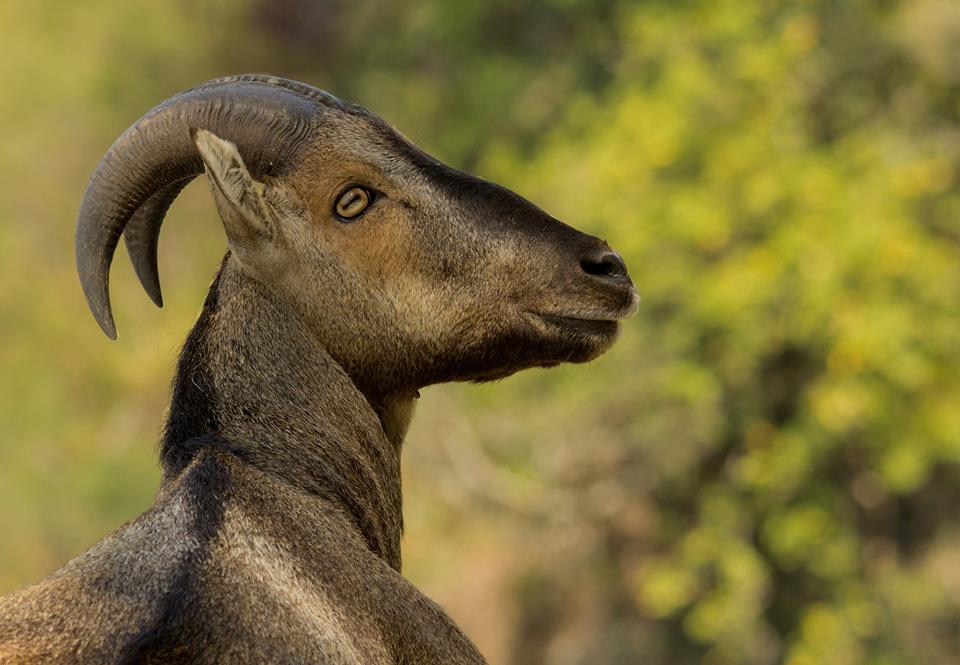
Mating takes place during the monsoon season and calving is during January-February. The female gestates for about 180 days and usually gives birth to one kid per pregnancy.
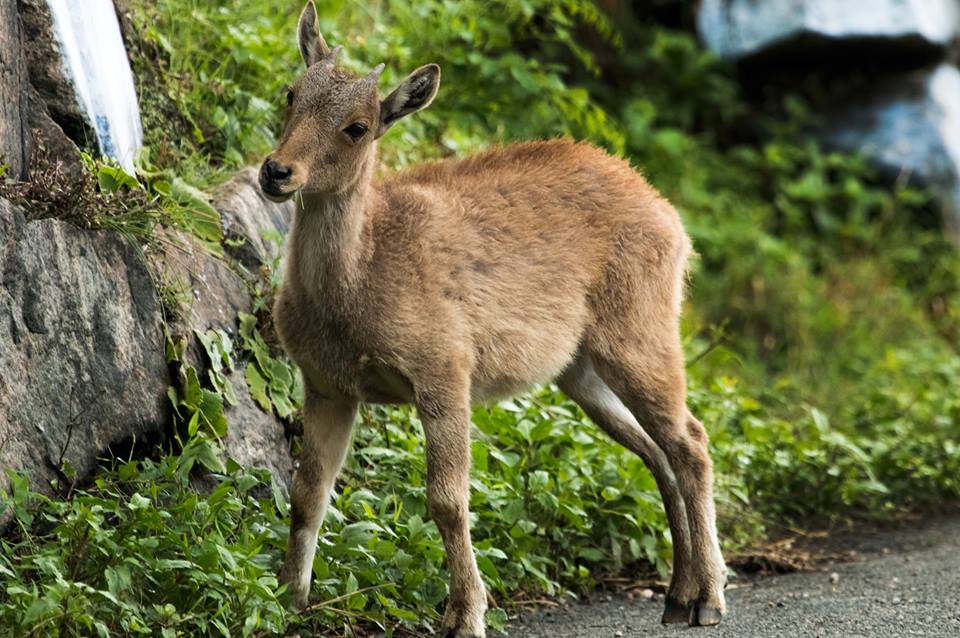
Outside of the breeding season, the males hang-out separately as bachelor herds on the best grazing areas and build up their strength, in preparation for the upcoming rut. The rutting season begins with the onset of the monsoon rains at the end of July, and continues for two months through the heavy rainfall. During courtship, male goats will lure the female by spraying themselves in their own urine and even decorate their horns with mud and grasses. When two or more males are competing for the attentions of the same female, fights can break out and whilst a sharp head butt may be enough to settle the issue, although, well-matched competitors can tussle for hours.
Endemic to the Western Ghats of South India, Nilgiri tahr are found at high elevations on cliffs, grass-covered hills, and open terrain of the Anamalai Hills. While occupying the grass-woodland mosaic habitat, their diet consists mostly of grass found in the montane grasslands and open shola patches atop their mountain home.
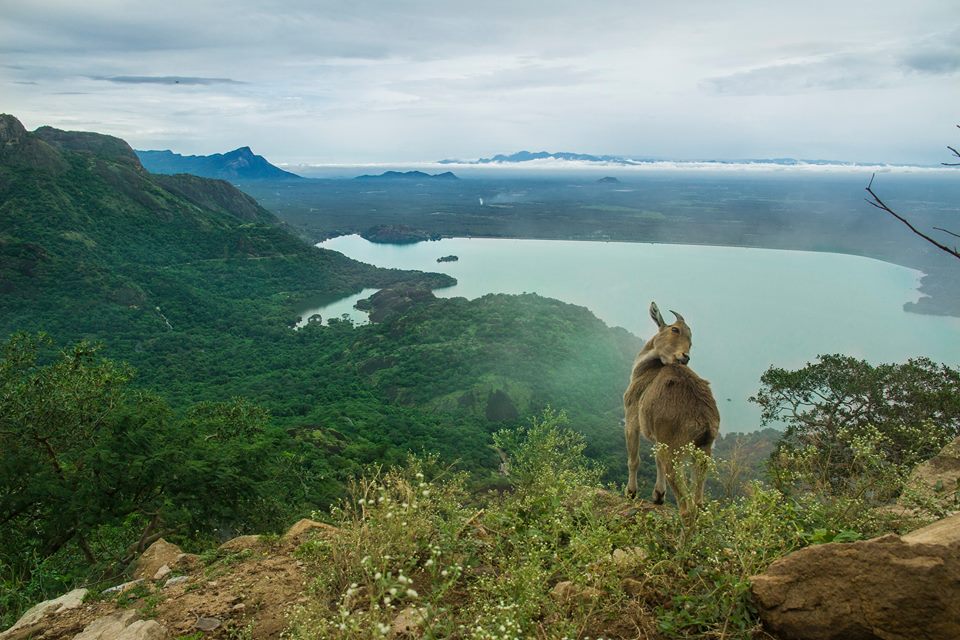
Threats:
Uncontrolled poaching, and conversion of tahr habitat to tea and wattle plantations, have decimated populations in the past. They also form an essential prey base to Tigers, leopard and wild dogs (dholes) – the main predators in the area. Nilgiri tahr are largely restricted to these upland grasslands, but also occur at lower altitudes.
Conservation:
With the drastic decline of tahr in the Nilgiri Plateau, strict-monitoring and conservation of the montane grassland-ecosystem of the Anamalai Tiger Reserve, especially the protected Grass Hills area is of vital importance. Grass Hills also happens to be host to the second highest population of the Tahr in the entire Westen Ghats only next to the adjacent Eravikulam National Park of Kerala, making the Anamalais an important conservation unit.
About the series – Icons of Anamalais:
A treasure house of bio-diversity, the Anamalai’s region of the Western Ghats is home to a spectacular array of wild species, some rare and endemic, that are found nowhere else on Earth. “Elephants Hills” as it is literally translated, the region is one of the most picturesque landscapes in the country that hosts a broad variety of ecosystems ranging from tropical wet evergreen forests to sholas and montane grasslands to dry, scrub jungles.
Home to the large mammals like the Asiatic Wild Elephants, Indian Gaur, the endangered species like the Wild Dogs, Nilgiri Tahr and Lion Tailed macaques, Anamalai’s is also first to be home to all 16 endemic bird species of Western Ghats.
This series of articles by The Pollachi Papyrus, celebrates the iconic birds and mammals of the Anamalai’s –a unique ecological tract and a global bio-diversity hotspot that needs protection and conservation.

